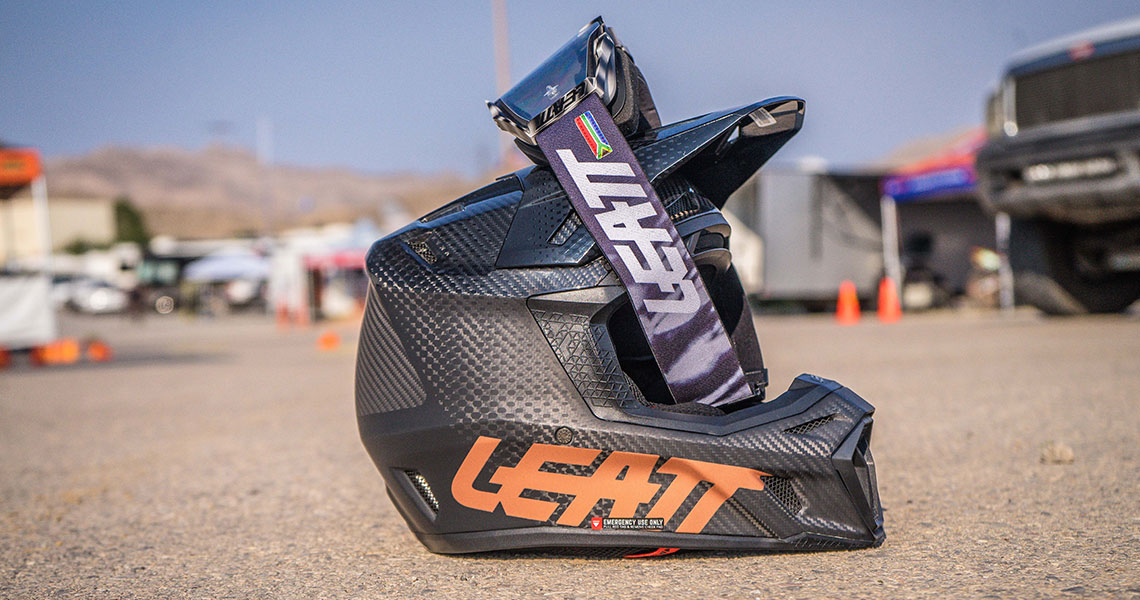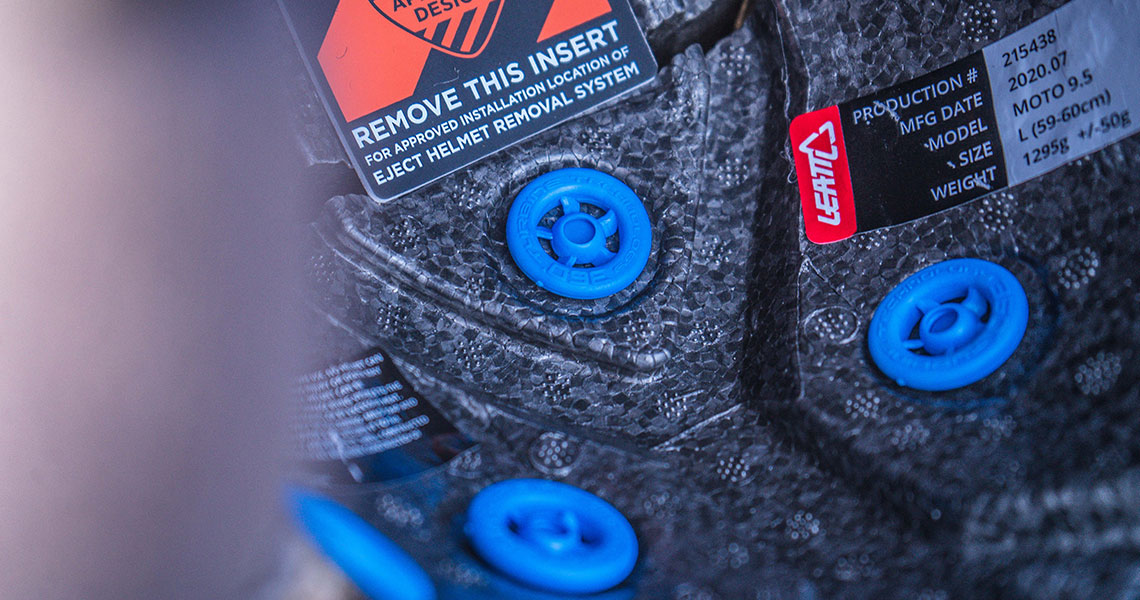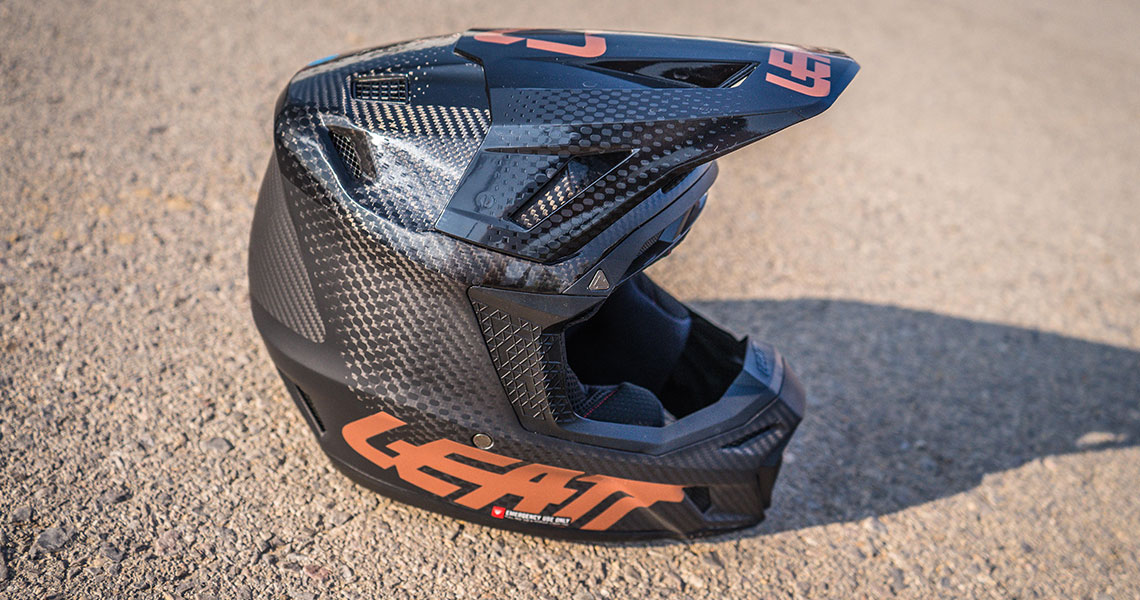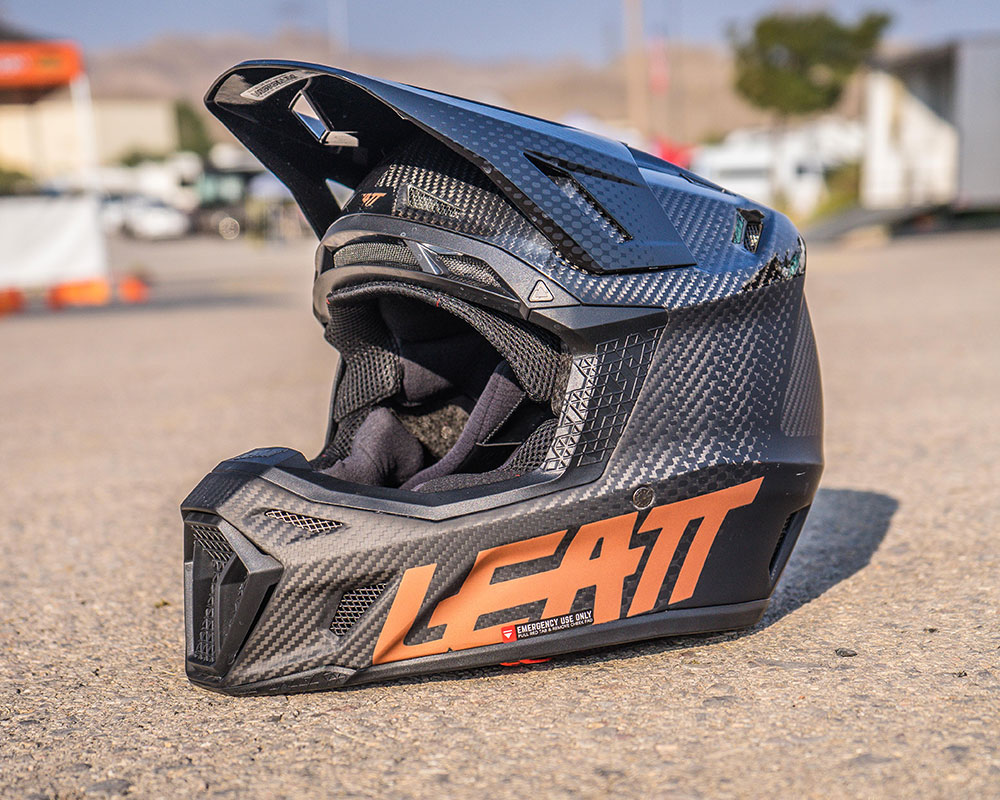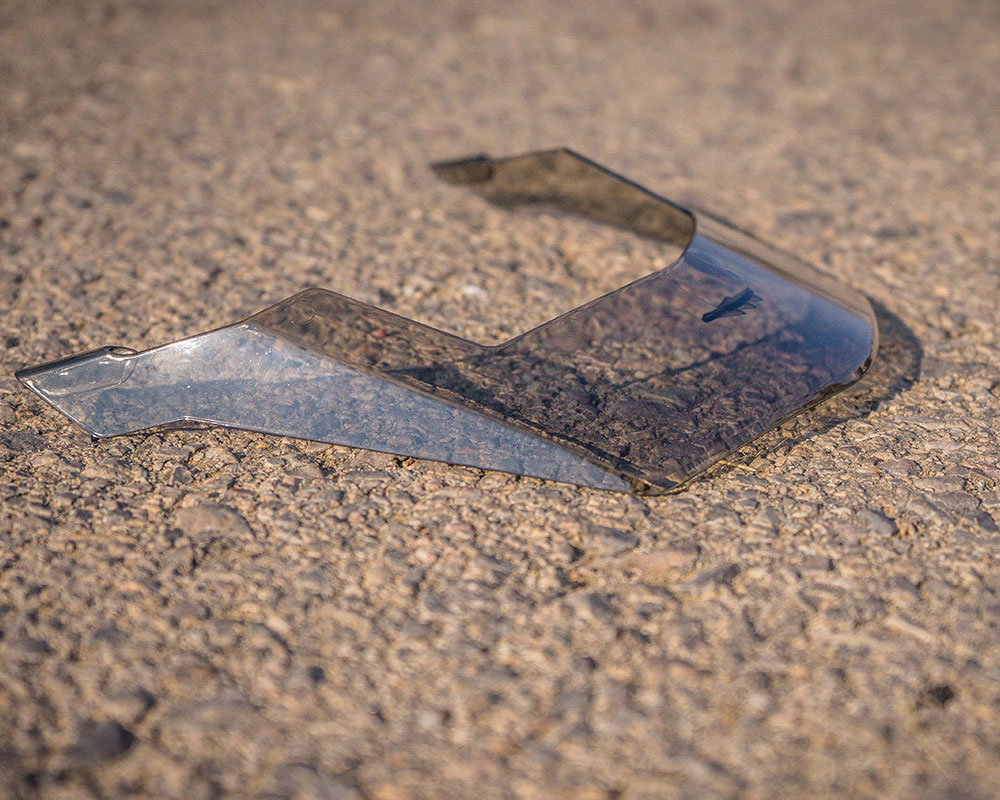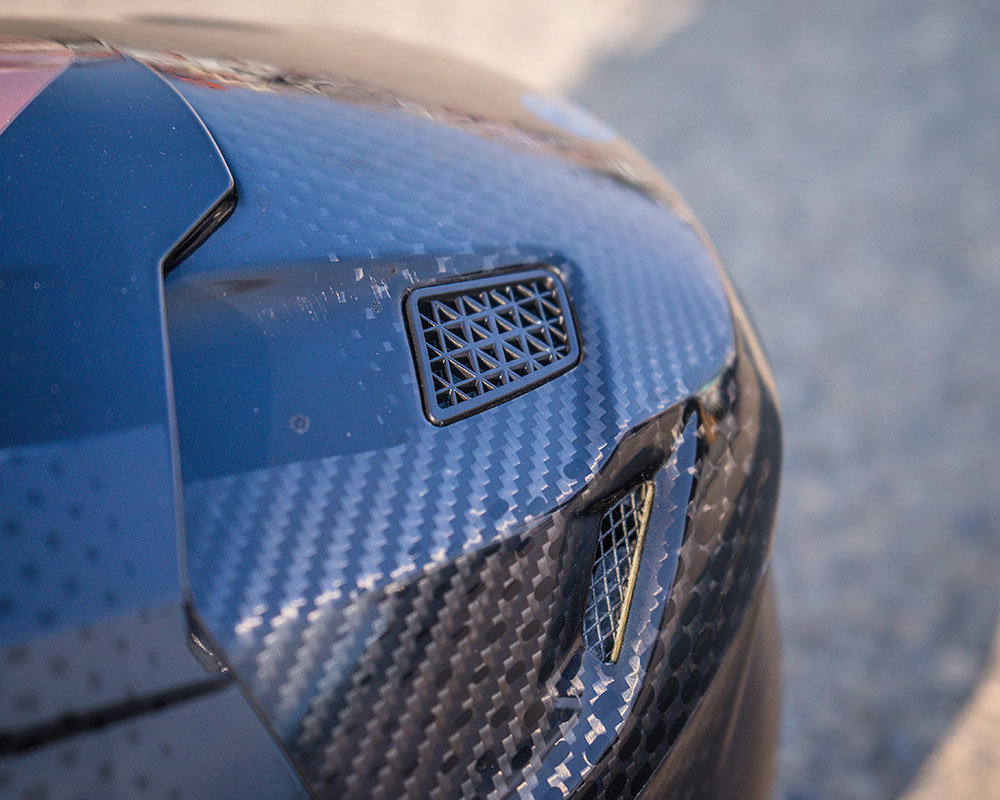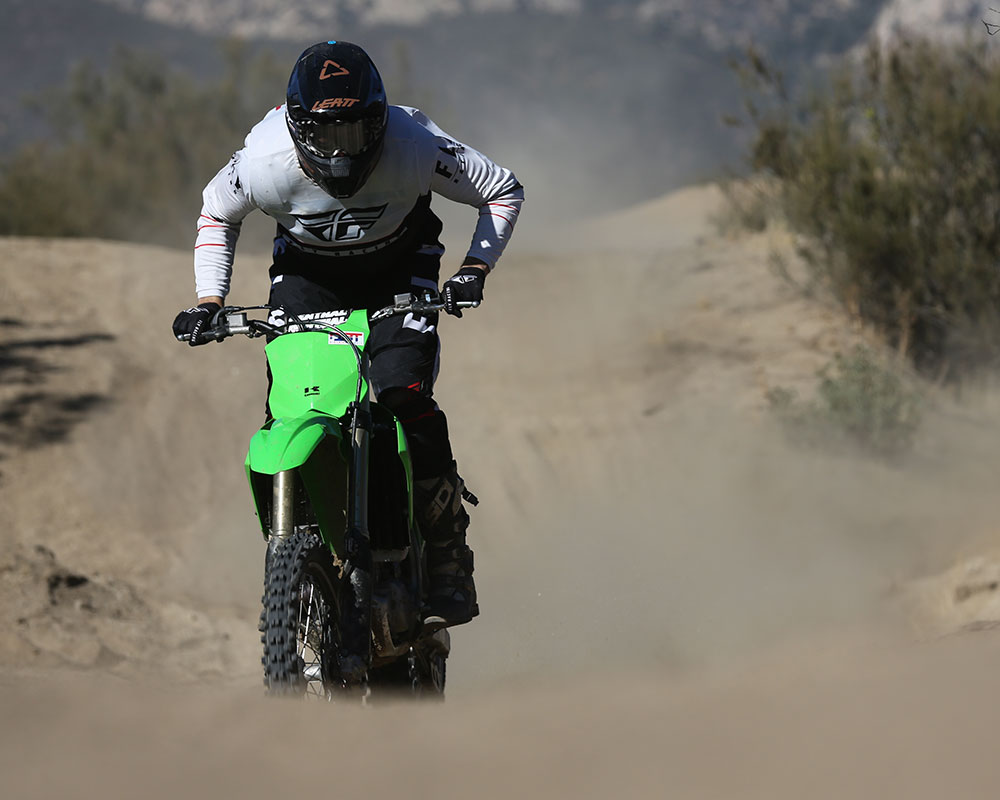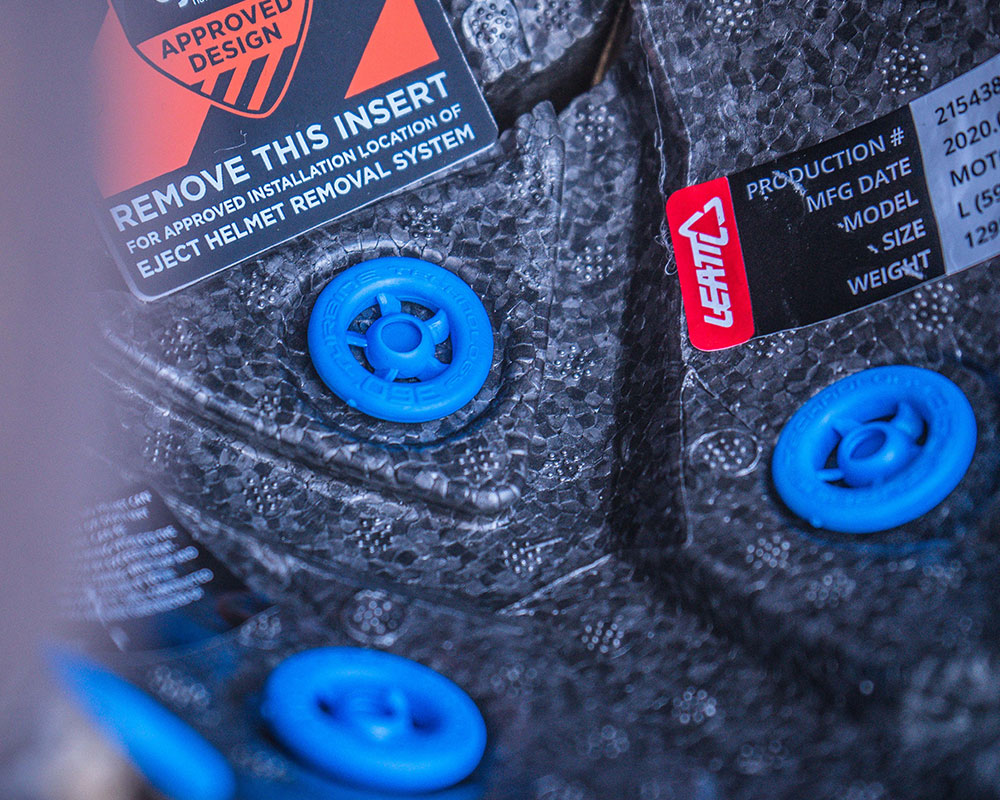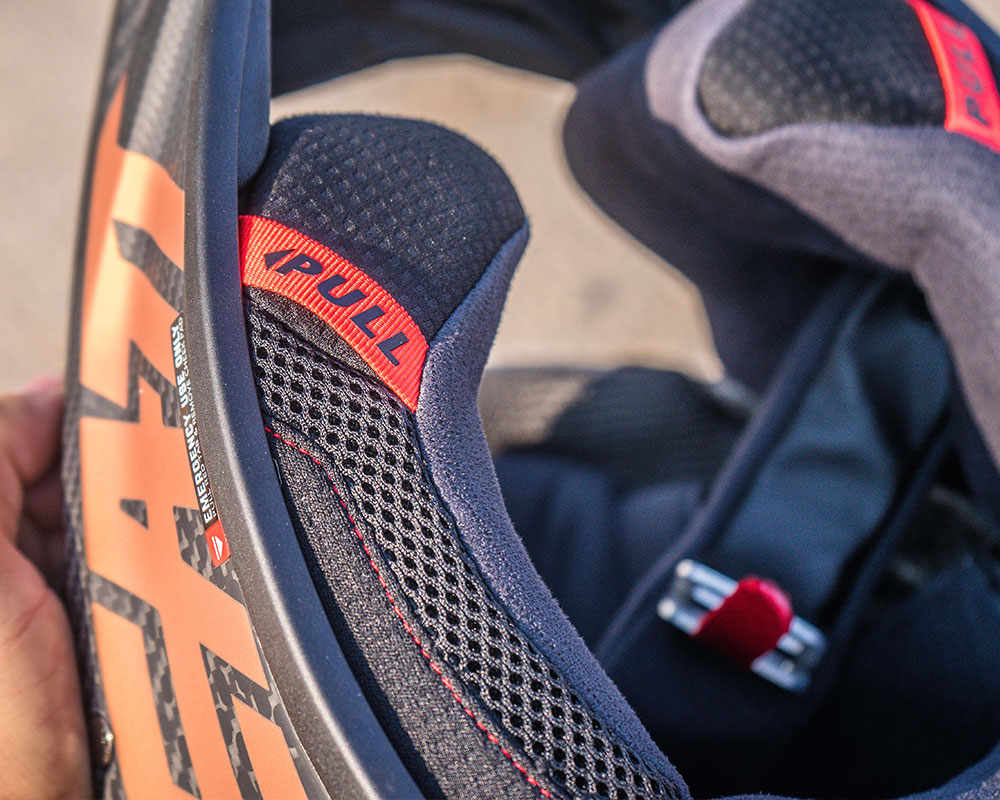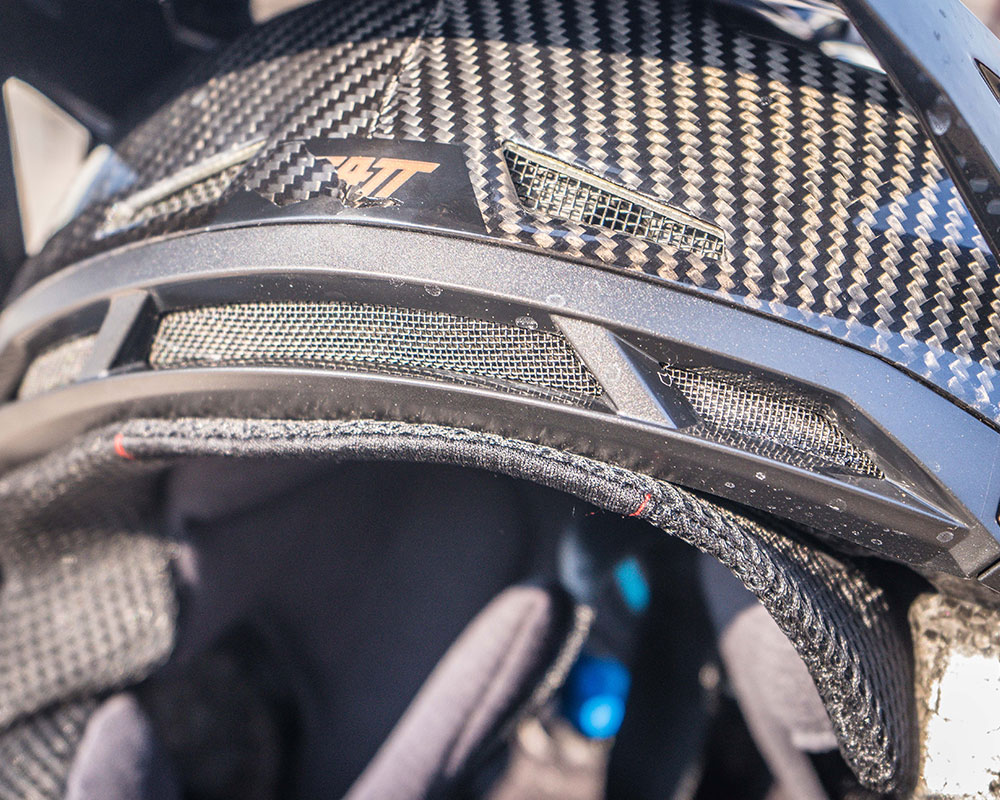Leatt Moto 9.5 Helmet
Company: Leatt
Price: $549.99
- One of the lightest helmets on the market.
- Comfortable.
- Latest technologies for safety.
- Includes goggles.
- Short/Fixed visor.
What it is
- The latest premium helmet from Leatt.
The Moto 9.5 Carbon V21 is Leatt’s flagship helmet that sits above the similar Moto 8.5 and the more budget minded Moto 3.5. It’s built with a carbon matrix shell that covers four densities of impact foam designed to reduce forces to the head and neck in a crash. Leatt also developed 360° Turbine Technology, which are the blue discs visible inside the helmet. The turbines absorb energy associated with a variety of impacts. According to Leatt, the technology reduces rotational acceleration by 40% and peak brain acceleration by 30%. The visor also has a breakaway function to reduce the forces transferred to the head and neck at impact and the cheek pads are designed to be pulled out during an emergency to aid in helmet removal.
The Moto 9.5 is one of the lightest helmets on the market coming in at a svelte 2.63 lbs. It includes large ventilation channels, a washable, breathable, moisture wicking inner liner and a hydration side port. It also includes a pair of their new Velocity 6.5 goggles (which we’ll review separately).
How it works
- Meets ECE and DOT standards.
- Very light.
- Excellent ventilation.
As we’ve pointed out in previous articles, helmets are not the easiest to test. We can compare the fit, finish, and features, but the ability to prevent or reduce injury in a crash, the most important job of a helmet, is much harder to measure. Even if we could replicate crashes and compare the results, that’s not a job that will have volunteers lining up for. We need to rely on the science and development, in this case it’s the 360° Turbine Technology that Leatt uses, as well as some experiences hitting the dirt. The other measuring stick is the certifications. The Leatt helmets meet DOT and ECE standards. All helmets sold in the US must meet DOT standards but many also receive certification from ECE or Snell as well. The testing is different as is the methodology but both look to recreate the effects of an impact in the lab. ECE is by far the most common from a global perspective and we’re seeing an increase in its use in the US market.
The first thing you notice about the new Leatt 9.5 is its weight, or lack thereof. It’s very light, the lightest I’ve personally worn, and ranks up there with some of the other lightweights we’ve tested. Leatt claims it’s 2.63lbs and that was consistent with what we found using a common kitchen scale. That puts it well under many of the most popular premium offerings in the market. After wearing it several times now, it’s still my first thought when I pick it up. And in science, Force = Mass x Acceleration, making weight on a helmet critical for safety in our eyes. The lighter the helmet, the less force it’ll have on our head. We’ve crashed a few times in it, nothing quite crazy, but good enough to get a good judgement and we feel confident in Leatt's ability to keep us protected.
The Leatt lid has a lot of venting in the shell and easily visible air channels molded into the interior foam. The removable liner has corresponding holes and gaps as well. It does a great job keeping the heat down. You can feel the space and even the airflow. In general, that’s all very positive, but that open space does reduce the sound deadening capability, and on very cold days, it might provide more venting that wanted.
As for the fit, I would describe it as suiting a common oval shaped head, similar to a newer Bell, Fox, or Fly. It’s comfortable around the crown of my head and firm but not harsh on my cheeks. I typically wear a medium or large depending on the brand and started with a Large Leatt but I found it not quite as snug as I would like. Since the medium and large use the same shell, I swapped out the liner for a medium and that gave me a nice firm and secure fit. The convenience in using the same shell for multiple sizes is nice when trying on a helmet isn’t an option before buying.
The Leatt incorporates some unique or less common features as well. First, the visor is attached without any of the typical thumb-screws and offers no adjustability as a result. I thought I would find myself wanting to move it, but I never did. Next, there’s an extension that can be quickly snapped on to the visor, which would help block the early morning sun and certainly help in wet and muddy conditions. You won’t need to duct tape an old goggle lens to this visor to help deflect the rain (it’s about time). Last is a channel that allows a hydration hose to be routed to your mouth for hands-free drinking. Leatt even sells a kit with a specially designed hose for a perfect fit.
Overall, I’m impressed with Leatt’s latest offering. The quality is on par with other premium helmets, it includes some of the latest safety technology, the price is a little lower than some of its competitors and it includes their top of the line Velocity 6.5 goggle.
Leave a Reply
